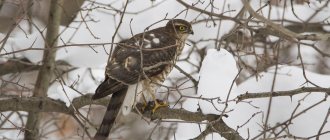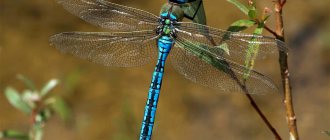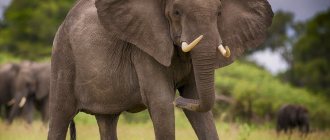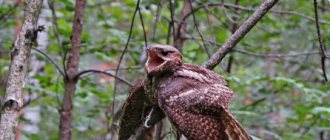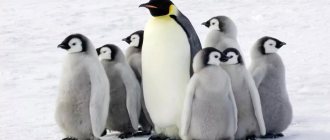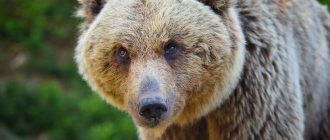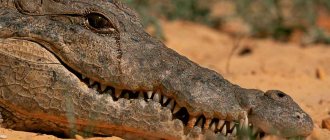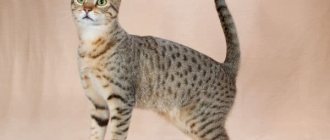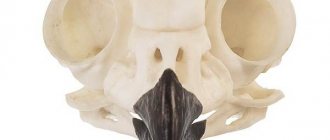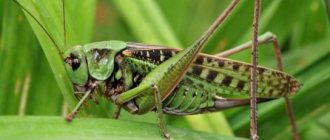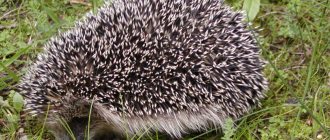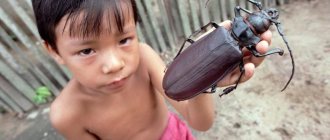Insects are a class of invertebrate arthropods that live almost anywhere on the globe, with the exception of the extreme Arctic and the tops of the highest mountains, forever covered with snow. Scientists say that where there are plants, especially flowering ones, you can always find at least one type of insect. It is almost impossible to count invertebrates of this class, but it is estimated that there are from 100 quadrillion to 10 quintillion of them on Earth. It’s hard to imagine such a number of individuals, but there really are so many insects.
How many types of insects are there in the world
Types of insects
Types of insects
Types of insects
Types of insects
Types of insects
Scientists have identified and described over 1 million species of insects, including over 17 thousand fossil species. Entomologists are still debating how many types of invertebrates actually exist on earth. Some claim that no more than 2-3 million, while others bring this figure to a massive 8. Every year about 7-8 thousand new species of individuals are discovered and described. All of them are usually assigned to one of more than 40 groups. Moreover, most of the insects known to us are included in one of the five considered the largest:
- Coleoptera. About 400 species. The forewings of representatives of this order have changed, turning into sclerotic or skin-covered elytra without veins. The lower wings are preserved and are used for flight. Basically these are beetles of various shapes and sizes.
- Diptera. Approximately 160.5 thousand species (about 4 thousand fossil species). Diptera include mosquitoes, midges, horse flies and true flies. Diptera live everywhere, including Antarctica.
- Lepidoptera. 160 thousand species. These are butterflies, moths, moths.
- Hymenoptera. 155 thousand species. Well known to everyone are wasps, bees, bumblebees, ants.
- Hemiptera. 105 thousand species. Bugs, water striders, aphids.
Many species have been poorly studied or not studied at all. This does not allow us to give them an accurate quantitative assessment.
The structure of insects
Invertebrate arthropods are very complex, each species is unique in its own way. But common features in the internal and external structure are still present. Thus, most insects have a mouth, wings, eyes and paws; they develop from an egg or pupa; the division of the body into parts is clearly visible.
External structure
External structure of an insect
External signs are the size of the body (length, width, volume), the color of the insect, the location of its limbs. The body of most species is conventionally divided into 3 parts - the head, chest and belly. Body length depends on the individual. There are insects whose bodies are almost impossible to see with the naked eye (less than 0.3 mm); there are giants with a body length of up to 30 cm. On the head of the invertebrate are located:
- eyes;
- mouth;
- mustache (a pair on each side of the head).
The shape of the mouth depends on the type of food. The insect can be sucking, piercing-sucking, gnawing or licking.
On the chest there are 3 pairs of legs and wings, if any. The abdomen is sometimes decorated with vestigial limbs.
The wings are an elastic plate attached to a frame formed by a tubular thickening - veins. Insects, as a rule, have 2 pairs of wings, but in some cases the second one is either not suitable for flight or is missing (to fly, an insect has to flap its wings at a speed of about 1 thousand strokes per second). The motor muscles are attached to the external skeleton - the cuticle.
Internal structure
Internal structure of a grasshopper
The body of higher animals functions due to the correct and coordinated operation of the following systems:
- Blood. In insects it is not closed, but instead of blood, its analogue, hemolymph, moves through the body. The heart is a pulsating portion of the spinal vessel. During contraction, hemolymph goes to the tissues of the body, and during expansion it is again absorbed into the vessel.
- Digestive. It is divided into 3 sections - anterior, posterior, excretory. Thanks to the anterior section, the insect is able to consume and transport food. In the posterior region, food is digested. At the same time, liquid is absorbed and undigested residues are eliminated. Excretion occurs with the participation of Malpighian vessels (tubes in which one end is closed and the other goes into the intestine).
- Nervous. Difficult to organize. Insects have instincts, they can live and work together, and quickly change the direction of flight.
- Sexual.
- Respiratory.
In addition to antennae and eyes, each insect has special sensory organs that help them detect aromas and subtle changes in body position in space and vibration. Some insects have glands that produce various substances, such as wax or silk. And endocrine ones are responsible for growth, molting and puberty.
Interesting fact : insects are heterosexual, and some of them have well-developed parental instinct.
Dragonfly
Position No. 2 is rightfully occupied by representatives of the insect world, which during movement develop the speed at which we most often drive cars. Dragonflies of the southern giant yoke species are capable of flying at a speed of 54 km/h while pursuing prey. Thus, in just a couple of hours they can cover hundreds of kilometers.
During flight, a dragonfly flaps its wings up to 150 times per second, so the human eye cannot distinguish its wings at such a speed. At the same time, they perform masterful techniques: they accelerate sharply, freeze in one place, and can fly backwards and forwards.
Scientists still do not fully understand all the principles of the skillful flight of dragonflies, their flights of tens and hundreds of kilometers, as well as endurance and mechanisms for replenishing energy expended during exercise. Bionics specialists have already borrowed a device from the dragonfly that helps ensure flight with a jet engine, and it is possible that it will suggest many more innovations that can be implemented in helicopter construction.
Dimensions
Stick insects are one of the largest insects.
As mentioned above, there are many insects in the world that are completely different from each other. Thus, both the flea and the butterfly are representatives of the same class, but outwardly they have little in common, differing primarily in the size and shape of the body. If we talk about dimensions, the largest of the existing invertebrates is the stick insect. The length of the individual discovered in Kalimantan is over 35 cm. Previously, a stick insect was discovered whose size, including its limbs, exceeded 52 cm.
Interesting: Why don’t moths stop flying towards fire?
The fossil taxa were also quite large. The body length of Meganeura was 50 cm, while its wingspan reached 70 cm.
Among beetles, the largest representative of the species is the Hercules beetle. Males of this species reach a length of 17 cm. The titan lumberjack, which lives in South America, is not inferior to Hercules. Its body length exceeds 16 cm.
There are giants among butterflies too. The scoop tizania agrippina has such large volumes that from a distance it can easily pass for a bird. Its wingspan is 28 cm. This is a nocturnal insect, it is almost impossible to see it in the daytime. The largest diurnal butterfly is Queen Alexandra's Ornithoptera (27.3 cm).
The owner of the smallest body is the male parasitic ichneumon (0.0139 cm). Among non-parasites, only the feather wing of the tribe can boast of small size (less than 1 mm).
Wild-pomorpha wasp
In 7th place are amazing insects with the smallest sizes.
These miniature wasps are parasites and develop in several eggs at once: a female and 2-3 males. Females grow larger, while males have a very simplified body structure. This is because the only function of the males of this species is reproduction, so they do not have wings or vision. The size of such wasps does not exceed 0.12 mm, which is why they remained unknown to entomologists for a long time: it is quite difficult to see and examine them without a magnifying glass.
Of the necessary organs, males have long hind legs that help hold the female during mating. After the function is completed, the male remains on the female for some time, and then the male’s tiny body quickly becomes exhausted and dies.
Reproduction
Insects are bisexual animals, which implies the division of representatives of each species into males and females, which together go through the following stages:
- insemination;
- fertilization;
- laying eggs (larvae).
Different types of insects have unique methods of reproduction. Thus, primary wingless insects reproduce externally-internally, and winged ones mate.
In insects that are characterized by a bisexual method of reproduction, eggs often develop without fertilization (spontaneous parthenogenesis). These include the silkworm. This type of prolongation of the race is typical for animals living in an unfavorable climatic zone, where representatives of the opposite sex are rare. Moreover, the same types of insects can reproduce in different ways. For example, the European stick insect is capable of producing offspring bisexually, but in the northern regions it prefers parthenogenetic reproduction.
Locust
You can keep several types of locusts at home:
- green Guyanese;
- rainbow;
- foamy.
This is an unpretentious insect that feels great at room temperature and moderate humidity. The size of the insectarium depends on how many insects live in it.
Feeding locusts is easy. Green lawn grass and the greens of any cereals are suitable for her. You can treat the locusts with sprouted wheat, rye and other cereal plants.
Lifespan
After formation, the mayfly exists only for a few minutes.
The lifespan of insects depends on many factors of the internal and external environment - climatic conditions, the presence/absence of predators, suitable food, genetic characteristics and even gender. Some live no more than a few hours, while others successfully exist for decades. Mayflies, stoneflies, and caddisflies are examples of invertebrates with a minimal lifespan. Thus, the female mayfly Dolania americana, after completing the formation of her body, lives exactly 5 minutes. But she also uses this time with maximum benefit - laying eggs. Moreover, the same mayfly, which has not yet turned into an adult and is at the larval stage, can live 2-3 years.
Butterflies exist somewhat longer than mayflies - about 2-3 weeks. Dragonflies and beetles develop within 2 years, but the same stag beetle lives 4 years as a larva, and in the adult state no more than 1-2 months. Conversely, an adult thistle lives for 8 years, while its larva develops very quickly.
Interesting fact : the song periodical cicada, which lives in North America, lives 16-17 years as a larva, and the queen ant lives even longer - 20 years. The termite queen reaches the age of 25 years.
Dimorphism
A male (left) and female rhinoceros beetle (Oryctes nasicornis) exhibit sexual dimorphism: the male has a horn, the female does not
In adult insects, sexual dimorphism and, in some cases, polymorphism are often observed. The most common type of polymorphism is sexual, inherent in social insects (bees, ants, wasps, termites). Another type of polymorphism can be called environmental, since it occurs under the influence of the external environment (for example, the presence and amount of available food). An example of ecological polymorphism is seasonal polymorphism: generations of the same species that appear in different months differ from each other. For example, in the moth butterfly (similar to the urticaria and belongs to the same family of nymphalids), the spring and summer generations differ in both color and size.
What do they eat
A grasshopper eats grass.
Different types of insects use organic substances as food, for example, tissues of animals and plants, waste products of other creatures, and remains. At the same time, insects, as a rule, are not omnivores and feed on any one type of organic matter, choosing between animal and plant origin.
Herbivores are called phytophages, those that feed on carrion are called necrophages, and plant debris on the soil surface are called detritivores. Interestingly, belonging to the group of herbivorous individuals does not mean at all that insects can feed on any parts of the plant. Among them there are those who feed only on leaves (phyllophagous), seeds (carpophagous), wood (xylophagous), and roots (rhizophagous). There are gall formers, among predators and parasites there are blood-sucking, ectoparasites and endoparasites. But this is not the final division. Everything described is classified as food specialization of the first order.
Some insects have unusual food preferences, for example, the tobacco beetle larva eats tobacco leaves and is therefore considered a dangerous pest.
Communication
Cicadas are known for their singing.
Insects communicate with each other using sounds, light and contact signals and pheromones:
- Sounds. Many insects are able to produce and detect sound signals. This allows them to navigate in space, find representatives of their species for mating, and even scare off enemies. Sounds are produced by systematic impacts of different parts of the body on the substrate. But, for example, cicadas have timbal membranes that help them produce high-pitched calls that resemble screams. Grasshoppers, crickets and mole crickets rub their wing covers against each other. The result is a chirping sound.
- Contact signal. Characteristic of well-organized social insects, such as bees. Having discovered a source of food, the scout bee begins to perform something like a dance, luring its companions in this simple way. Ants use antennas on their heads to transmit signals.
- Glow. Most Coleopteran insects glow in the dark. They use light signals to search for food or call a partner. At the same time, the light does not have to be white or yellow; some fireflies alternately emit light of red and green shades.
Pheromones are used for the sole purpose of attracting individuals of the opposite sex. But some insects can emit certain odors when a predator approaches, scaring them away and driving them away.
Interesting: Insects and their larvae - description, photo and video
Spreading
Close-up photo of an anthill Insects
are ubiquitous, as mentioned above. There are almost no unsuitable habitats for them. Beetles, butterflies, and spiders have mastered the tundra, deserts, and inaccessible mountain peaks. Invertebrates can even be found in the crater of a volcano, where they feel quite comfortable. But most of them are in the tropics. One of the important factors in the conquest of planet Earth by insects is climate and food connections, because if sucking insects find food in almost any corner of the world, then phytophages need plants, and of the species that they are accustomed to feeding on. As soon as any type of tree or grass disappears from the face of the earth, insects disappear after it, because they cannot feed themselves.
Also, many insects are unable to move to a food source on their own. People often help them in this, often to their own detriment. Thus, along with potatoes, the Colorado potato beetle was introduced, which became perfectly accustomed to the European climate and expanded its diet to include not only potatoes, but also eggplants, sweet peppers, and tomatoes.
Some insects originally lived on land, but during the process of evolution, they preferred water space. Now they live in small fresh water bodies (lake, pond), but sometimes they are also found in the sea (sea water strider).
Groups of insects
Insect pupa
The class of invertebrates is divided into 2 groups, depending on the method of development:
- With incomplete transformation. The female lays an egg, from which a larva emerges after the required time. Outwardly, she is no different from an adult, but some of her organs are underdeveloped. The larva moults, changing appearance until it becomes an exact copy of the female that laid the egg.
- With a complete transformation. From the egg emerges a larva that is completely different from the adult, usually a worm. The beginning of molting leads to the formation of a pupa, and from it an adult is formed.
During the changing seasons, insects hardly grow. This allows them to survive in rather unfavorable conditions. The pupa formed in August will become an adult butterfly only in May.
Termites
These animals never live alone. They create complex colonies with a clear distribution of functions. This feature is due to the fact that termites have lost the ability to take care of themselves and are therefore completely dependent on the community, like the cells of one living organism.
All actions of individual specimens are so clearly controlled that the illusion of the existence of a single “superorganism” is created, the power of which exceeds the power of many large animals. People often associate termites with ants, but their closest relatives are cockroaches.
Termites make it into the top 10 amazing insects and animals thanks to the queen of the colony - a reproductive female who, after only leaving the termite mound for mating, loses her wings and eyesight. Her abdomen begins to grow and lay eggs. Their number can reach 30,000 daily!
All members of the termite mound are born from such clutches. Termites touchingly care for their mother: they bring her food, clean her body and transfer eggs to special incubators. And the queen herself is unable to move, because while she lies in the nest, her large body continues to grow, turning her into a helpless prisoner of a labyrinth of narrow passages leading to the outside world.
For such cohesion, termites are ranked 10th in the ranking of the most amazing insects in the world.
The meaning of insects
Silkworm Insects
are extremely important, their disappearance will lead to disruption of the cycle of substances in nature. Bees participate in pollination, produce honey and wax, and other useful materials, such as propolis. The silkworm is used to produce silk, and ants destroy garden pests.
Interesting fact : many insects are pests, dangerous to plants and even to humans, but they cannot be completely destroyed. This will leave a huge number of birds and other larger creatures without food.
How do insects breathe?
Insects do not have lungs, so they breathe using a special system - the trachea. These are hollow tubes, one end of which is located on the sides of the creature. The respiratory system permeates the entire body of the insect. Once inside, the air sweeps throughout the body, saturating it with oxygen. There are also insects that use the skin system for breathing. With its help, air saturates the body through the entire surface of the body.
There is a hypothesis that the higher the oxygen content in the air, the larger the size of the insect, since it breathes through the body.
Pyrophores
In the 9th position are a special type of fireflies - pyrophores.
Many fireflies have the ability to emit a mysterious light that attracts people. Their luminescent organ is located at the very tip of the abdomen and contains many photogenic cells. The glow occurs due to the oxidation reaction of a fatty substance - luciferin.
Fireflies of the genus Pyrophora have achieved impeccable mastery in controlling the brightness and duration of glow. These inhabitants of tropical forests can turn on 2 different colors on their body at once: the “flashlight” on the abdomen glows bright orange, and on the chest – green.
The brightness of the glow produced by pyrophores is a record among representatives of this class - this beetle can shine 150 times brighter than an ordinary firefly. Local inhabitants use pyrophores to light their way at night by placing several beetles on their hats.
How do insects overwinter?
Insects spend the cold season in different ways. Some, like birds, fly south. This is what some species of butterflies and dragonflies do, covering significant distances together with birds and rising to incredible heights (over 5 km).
Others fall into numbness and hibernation. They climb deep into the earth, hide under the roots of plants, under fallen leaves and trees, stop consuming food and lose mobility. Ants overwinter on the lower floors of the anthill, often located at a depth of about 1 meter.
Naturally, not all species overwinter; representatives of many simply do not survive winter: their life is so short that they are not even aware of the cold.
In the spring, the suspended animation into which the surviving insects fell ceases, and butterflies, beetles, and dragonflies are born along with the first rays of the spring sun.
Main types of insects
About 15 types of different insects are found everywhere. These are bumblebees, butterflies, cockroaches, dragonflies, praying mantises, ants, chafers, grasshoppers, wasps, mosquitoes and others. Each invertebrate is unique and requires close study.
Bumblebee
Bumblebee
A winged, arthropod-like insect that undergoes a complete transformation as it matures from a worm-like entity into a beautiful insect covered in thick, wool-like hairs. Belongs to the bee family, bumblebee genus. The size depends on the gender - varies from 7 to 35 mm. The body is brown, with yellow accents. Bumblebees can collect nectar; nature has equipped them with special proboscis.
Firefly
Firefly
Coleopteran insect measuring from 4 mm to 3 cm. The body is flattened and covered with hairs. The firefly is capable of flying; it has 2 pairs of wings, one of which has turned into elytra. The head is large, the eyes are round, there are antennae, the oral apparatus is present only in larvae or females, males do not have it. The ability to glow in the dark also depends on gender.
Cockroach
Cockroach is
an arthropod insect whose body has an oval shape. Cockroaches come in different shapes, sizes and colors, the smallest barely reach 1 cm, the largest ones can grow up to 10 cm in length. The cockroach has 6 legs, wings and elytra, a well-developed mouth, as well as antennae that allow them to capture the slightest movements and vibrations of the air. Cockroaches feed on organic food.
Interesting: Mantis - interesting facts
Mantis
Praying Mantis
An insect with an elongated body, a mobile, almost triangular-shaped head and convex large compound eyes located on the sides. There are 3 more small eyes above the base of the antennae. The mouthparts are of a gnawing type, directed downwards. In this case, the pronotum almost never overlaps the head, which is a feature of insects of this type.
Midges
Midges
Midges belong to the order Diptera. They are distinguished by their small body size - from 1.2 to 6 mm. Small midges infest tropical forests; larger specimens live in the north, in temperate and subpolar latitudes. The midge's body is divided into three parts - head, abdomen and chest. The eyes are compounded, there are no additional simple ocelli. Life expectancy is several days or several weeks. Feeding is gender-linked, with females biting living creatures and males consuming plant nectar.
Chafer
May beetle
Some representatives of the May beetle variety reach a length of 30 cm or more. The body is wide, convex, its shape is elongated-oval. The color of the plates and wings is black or reddish brown. The insect is a winged insect and has a gnawing type of mouthparts. The beetle feeds on plants - it eats young shoots, flowers and ovaries of plants, as well as leaves.
Ant
Ant
A hymenopteran insect that has a social hierarchy. All ants in the anthill are divided into 3 castes - workers, females and males. There are about 13 thousand species of ants in the world, over 300 of them live in Russia and the post-Soviet space. These are black garden, red myrmica, small forest ant, pharaoh ant and others. The size of the body and its color depend on the habitat and belonging to a particular species. They feed on food of plant and animal origin.
Butterfly
Butterfly
A lepidopteran insect with a body covered with a chitinous membrane and well-defined wings. Scientists identify more than 158 thousand species. They live almost everywhere, with the exception of Antarctica. The most types of butterflies live in Peru and India. They feed on pollen and nectar of plants. But they can eat tree sap or rotting fruits. Sometimes butterflies steal honey from bee hives.
Bee
Bee
A social animal that, together with other members of its swarm, can build nests (hives), obtain nectar and process it into honey. The bee's body is covered with fluffy fibers, its wings are well developed, and it has a sting with which it extracts nectar. It is also used to protect against enemy attacks. Bees are distributed everywhere in huge numbers, but most of them are found where flowering plants are present.
Mosquito
Mosquito
A small blood-sucking insect that lives in almost all corners of the planet. Body length depends on the species and ranges from 4-17 mm. The wings and body of the mosquito are in most cases gray or brown, but there are orange, yellow, green and even red species. To obtain food, the animal uses a thin but long proboscis.
Wasp
Wasp
Hymenoptera arthropod insect. The body is medium in size (1.5-10 cm), painted in black and white stripes, which have long been the calling card of the wasp. The wasp is found everywhere except the Arabian Peninsula, the Arctic and the Sahara. Some species of this insect are herbivores, but there are also predators among them.
Interesting fact : wasps are so numerous on planet Earth that certain species belong to different families.
Grasshopper
Grasshopper
New-winged insect from the grasshopper superfamily. The body length of individual representatives of the species is 1.5-15 cm. The color depends on the habitat, but the wings and body of most herbivorous representatives of the species are green. The grasshopper is not a pest, except for those members of the family that feed on citrus fruits.
Fly
Fly
A two-winged arthropod insect, the size of which depends on its belonging to a specific species. There are very small flies, 10-15 mm long, and giant flies, whose body dimensions are at least 2 cm. The wings are membranous, the head is round, and can make buzzing sounds in flight. Some types of flies are carriers of various diseases.
Dragonfly
Dragonfly
A winged insect with six legs. The dragonfly has a slender body, a large head and a streamlined chest, and beautiful transparent wings. Interestingly, the head is connected to the body in such a way that the creature can rotate it 180 degrees. It brings great benefits by destroying insects that are undesirable for humans. Thus, dragonflies living in Europe feed on mosquitoes, and those living in Africa feed on the Tsetse fly, which is harmful to people and livestock.
Ladybug
Ladybug
Coleopteran insect, ranging in size from 4 to 10 mm. The body color is red with black speckles on the wings. The exact origin of the name is unknown. It is found everywhere, lives a long time (6 months), but after the female fulfills her duty to future generations (laying eggs), her existence ceases. The ladybug is useful to humans and plants; it feeds on aphids, destroying up to 100 individuals of this pest per day.
If you find an error, please select a piece of text and press Ctrl+Enter.
Peacock-eye Atlas
In 3rd place is the Atlas peacock butterfly, which is the largest representative of the insect world. Its wingspan is 26 cm, which causes real admiration among people.
This giant lives in eastern countries - China, India, Pakistan, etc. The largest specimen was discovered on the island of Java, its length was 26.2 cm. It was a female, since females of this species are much larger than males.
The Atlas Peacock-eye is most active in the evening, when dusk sets in. In poor lighting, it is often mistaken for a silent bird.
Its lifespan is very short: immediately after reproduction, the butterfly dies. She does not even have a mouth, since in adulthood she does not eat, but lives off the reserves that accumulated during the larval stage.
People appreciated not only the size of the peacock eye: its huge cocoons in Taiwan are used as wallets, and tourists willingly buy such souvenirs. In addition, fagar silk is produced from cocoons on a commercial scale, which is superior to silkworm thread in strength and durability.
